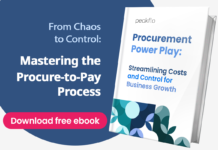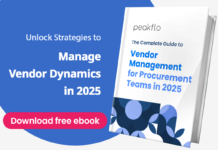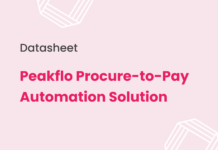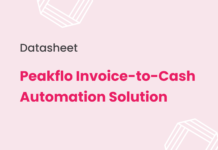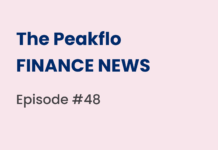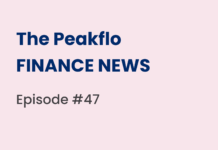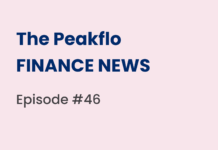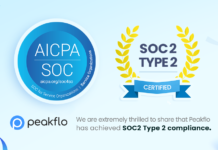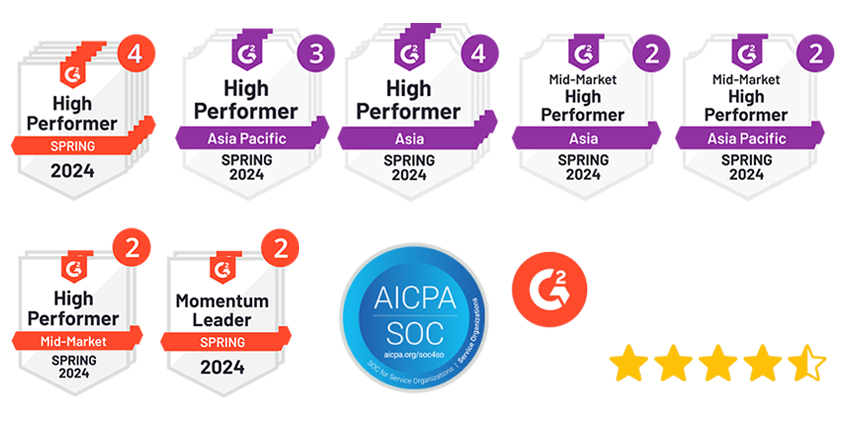Does your business rely on multiple IT vendors for software, security, or cloud services? Without a structured IT vendor management process, businesses risk overspending, contract disputes, and compliance issues. Effective vendor management ensures cost control, risk reduction, and operational efficiency.
According to the Ponemon Institute, 50% of respondents say their companies do not monitor the security and privacy practices of vendors when they share sensitive data. This lack of oversight can lead to financial losses, data breaches, and regulatory penalties. A well-managed IT vendor management process helps businesses track vendor performance, enforce compliance, and reduce risks.
In this guide, you will learn the key components of IT vendor management, why a structured approach matters, and the 8 essential steps to mastering the process.
Key Components of IT Vendor Management
A strong IT vendor management process ensures businesses choose the right vendors, maintain compliance, and control costs. To manage vendors effectively, companies must focus on these five key areas:
1. Vendor Selection and Evaluation
Choosing the right vendor is the foundation of a successful partnership. Businesses must assess vendors based on pricing, reliability, compliance, and service quality. A structured evaluation process helps avoid unexpected costs and poor service.
Reviewing vendor history, client feedback, and industry certifications ensures a well-informed decision. Clear selection criteria reduce risks and improve long-term vendor performance.
2. Contract and SLA Management
A well-defined contract protects both parties and sets clear expectations. Service Level Agreements (SLAs) outline performance standards, response times, and penalties for non-compliance.
Strong contract management ensures vendors meet obligations, reducing disputes and financial risks. Businesses must regularly review contracts to adapt to changing needs and maintain compliance with industry regulations.
3. Performance Management
Ongoing vendor performance tracking helps businesses maintain quality and efficiency. Key Performance Indicators (KPIs) measure service delivery, issue resolution times, and cost-effectiveness.
Regular performance reviews ensure vendors meet expectations and allow for early intervention when issues arise. A structured approach prevents service disruptions and financial losses.
4. Relationship Management
Building strong vendor relationships leads to better service, faster issue resolution, and potential cost savings. Open communication, regular meetings, and feedback loops improve collaboration. Vendors who feel valued are more likely to offer better support, negotiate favorable terms, and prioritize business needs.
5. Risk Management
Poor vendor oversight can lead to compliance violations, security breaches, and financial losses. Security Scorecard research shows that 98% of organizations globally have relationships with at least one breached third party.
Additionally, Exterro reports that 81% of Americans believe the risks of data collection outweigh the benefits, and nearly 50% have stopped using a product or service due to privacy concerns. Businesses must identify risks, track regulatory requirements, and enforce data protection policies. Regular audits, security assessments, and contingency plans help mitigate risks. A proactive approach safeguards business continuity.
A refined vendor management strategy ensures these components work effectively together. Next, we will understand why a structured approach is essential.
Why Do You Need a Refined Vendor Management Strategy?
An outdated IT vendor management approach can lead to financial losses, compliance risks, and operational inefficiencies. A structured strategy helps businesses maximize vendor value while reducing risks. Here’s why refining your vendor management process is essential:
- Cost Control: A well-managed vendor strategy prevents overspending, identifies hidden fees, and ensures competitive pricing.
- Risk Reduction: Strong oversight reduces security threats, regulatory violations, and business disruptions.
- Performance Optimization: Regular tracking and feedback ensure vendors meet service expectations and improve efficiency.
- Stronger Compliance: Clear contracts and regular audits help businesses stay aligned with industry regulations.
- Better Vendor Relationships: Effective communication and collaboration lead to faster issue resolution and long-term partnerships.
A refined IT vendor management process strengthens business stability and efficiency. Now, let’s break down the key steps to mastering vendor management.
10 Steps of the IT Vendor Management Process
A structured IT vendor management process helps businesses maintain control, reduce risks, and ensure seamless collaboration with external vendors. By following these key steps, companies can create a well-organized vendor strategy that improves efficiency and strengthens partnerships.
1. Vendor Matrix
Organizing vendor data in a structured file simplifies tracking and decision-making. This matrix should include key details like service scope, contact information, contracts, and saved agreements. Keeping it updated ensures seamless vendor onboarding and helps new team members quickly understand existing vendor relationships.
2. Vendor Onboarding
A structured onboarding process helps vendors understand your industry, business values, and project goals. Providing resources like presentations, case studies, and competitor analysis improves alignment. Strong onboarding ensures vendors grasp your business context, reducing miscommunication and improving collaboration.
3. Internal Team Structure
Assigning clear ownership within your team prevents confusion in vendor management. Designate specific team members for billing, contract management, approvals, and communication. A well-defined structure ensures smoother coordination and accountability at every stage of the vendor relationship.
4. Work Management Tools
Choosing the right collaboration tools improves workflow transparency and productivity. Platforms like Jira, Asana, and Trello help track progress, while Slack and Google Workspace streamline communication. Integrating these tools into IT vendor management prevents delays and enhances teamwork.
5. Project Schedule and Milestones
Defining project timelines and milestones ensures progress stays on track. Both parties should align schedules considering vendor capacity, holidays, and business growth plans. A clear roadmap helps manage expectations and prevents unnecessary delays.
6. Acceptance Procedure
Delays often stem from slow approval processes. Streamlining decision-making and reducing the number of approvers speeds up project execution. A clear approval structure ensures vendors receive timely feedback and can move forward without bottlenecks.
7. Regular Updates and Check-Ins
Ongoing communication is key to successful IT vendor management. Weekly status meetings and daily recaps help align expectations, address concerns, and maintain momentum. Regular check-ins allow for quick issue resolution and smoother project execution.
8. Defined Communication Channels
Selecting the right communication platforms prevents miscommunication and delays. Limiting points of contact ensures messages remain clear and structured. Typically, vendors communicate through Project Managers, while clients coordinate with decision-makers like Product Owners and CTOs.
9. Continuous Improvement
Vendor relationships should evolve through ongoing feedback and process adjustments. Since every company operates differently, refining collaboration methods over time enhances efficiency. A commitment to continuous improvement strengthens long-term vendor partnerships.
10. Vendor Exit Strategy
Ending a vendor partnership should be as structured as onboarding. A clear exit plan should cover intellectual property transfers, documentation handovers, and notice periods. Preparing for transitions minimizes disruptions and ensures business continuity.
A well-defined IT vendor management process lays the foundation for stronger vendor relationships. But who within an organization is responsible for managing these vendor interactions? Let’s find out.
Who Is Responsible for IT Vendor Management?
Effective IT vendor management requires collaboration across multiple roles within an organization. Each department plays a distinct part in ensuring vendor relationships remain efficient, compliant, and beneficial. Here are a few of the responsible teams:
- Procurement Team: Handles vendor selection, contract negotiations, and cost management. This team ensures vendors meet business requirements and align with company budgets.
- IT Department: Oversees technical compatibility, security compliance, and system integrations. The IT team ensures vendors adhere to cybersecurity policies and maintain service reliability.
- Finance Team: Manages invoicing, payments, and cost optimization. Finance teams track vendor expenses and ensure financial agreements align with company goals.
- Compliance and Risk Management Team: Ensures vendors follow regulatory requirements, data protection policies, and industry standards. This team also identifies and mitigates security and compliance risks.
- Operations and Project Managers: Supervise vendor performance, track milestones, and maintain communication. They ensure vendors meet project deadlines and deliver quality services.
Successful IT vendor management depends on cross-team coordination. But even with the right structure, managing vendors efficiently can be challenging. Let’s see how Peakflo simplifies the process.
How Peakflo Can Help Simplify IT Vendor Management
Peakflo offers an automated accounts payable and accounts receivable (AP & AR) solution, streamlining financial processes for businesses. Here’s how Peakflo transforms IT vendor management:
- End-to-End Procurement Automation

Peakflo streamlines procurement by automating purchase requisitions, vendor bid comparisons, and purchase order approvals. Instead of juggling multiple tools, businesses can manage the entire procure-to-pay cycle in one place, reducing manual effort and speeding up procurement workflows.
- Save Time and Reduce Errors in Invoice Processing

Peakflo’s accounts payable automation eliminates tedious invoice processing tasks. AI-powered invoice OCR extracts invoice details automatically, while automated PO matching prevents duplicate or incorrect payments. Smart approval workflows ensure invoices are routed efficiently, reducing processing time and minimizing human errors.
- Vendor Management Made Simple

Peakflo simplifies vendor onboarding and compliance tracking. Vendors can check purchase orders, submit invoices, track payment statuses, and communicate directly with your team. For MSME vendors, Peakflo’s WhatsApp vendor portal offers a hassle-free way to send invoices and manage payments; no complex software is required.
- Effortless Payment Automation and Reconciliation

Peakflo automates payments and reconciliations, allowing businesses to process bulk and advance payments in just a few clicks. AI-powered vendor statement reconciliation makes tracking payments 20x faster, ensuring seamless financial management.
- Smart Budget Management

Budget overruns are a common challenge in IT vendor management. The tool automates budget tracking, helping businesses monitor expenses in real-time. By setting up predefined budgets, organizations can prevent overspending and maintain financial control.
- Enhanced Compliance and Audit Readiness

Peakflo centralizes vendor documentation, approvals, and payment history, ensuring a transparent audit trail. Thus, businesses can comply with industry regulations while improving visibility into vendor activities.
Conclusion
A well-structured IT vendor management process ensures businesses select the right vendors, maintain compliance, and mitigate risks. Without proper oversight, companies face operational inefficiencies, security threats, and financial setbacks. A refined approach covering vendor selection, contract management, performance tracking, and risk mitigation helps maintain strong, reliable partnerships.
By automating procurement, invoice processing, and vendor communications, businesses can reduce manual work, prevent errors, and improve overall efficiency. Optimized workflows and clear accountability ensure smoother operations, reducing delays and cost overruns.
A proactive strategy is key to long-term success. Strengthening vendor relationships, enforcing structured approval workflows, and using automation tools can significantly improve financial management.
Book a demo to see how Peakflo simplifies IT vendor management and transforms vendor collaboration.










![Why AI Sales Calls Are Making Good Sales Reps Even Better [2025 Guide] ai sales calls](https://blog.peakflo.co/wp-content/uploads/2025/09/65168cf6-3001-4733-8cbc-12d5684cf449-218x150.webp)








